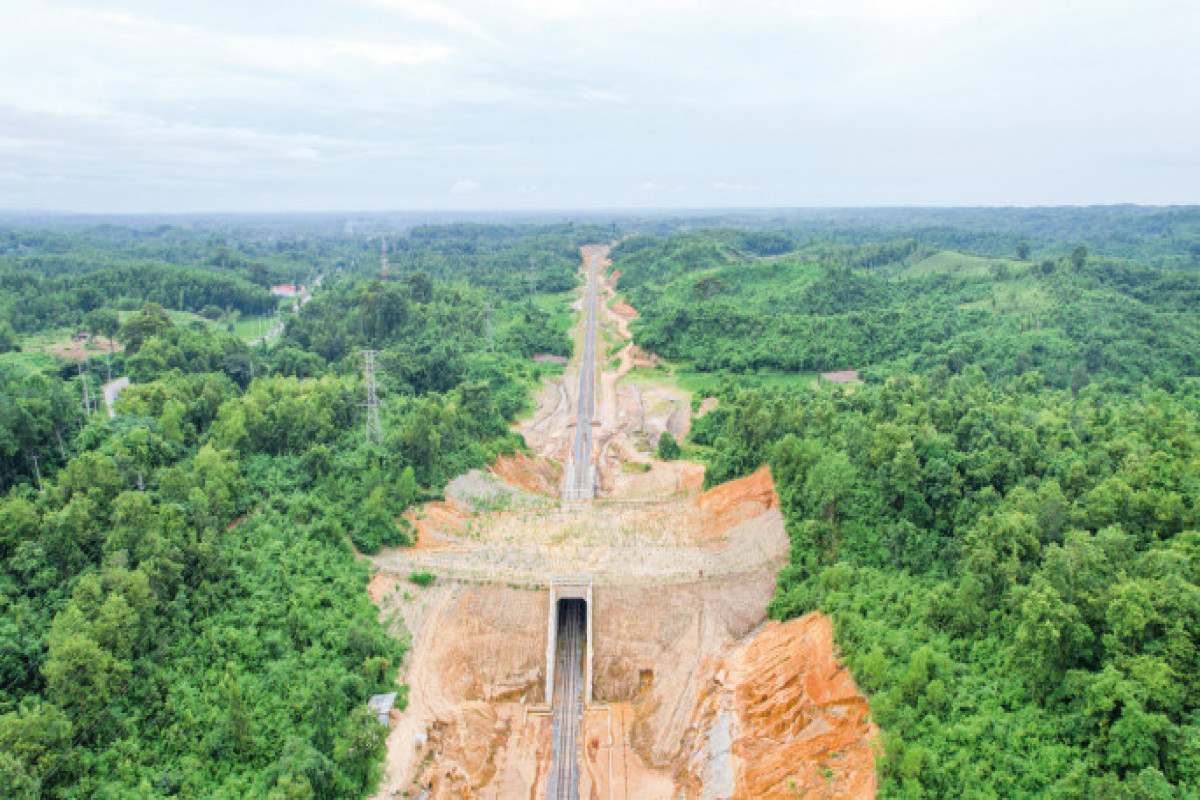The recently completed Dohazari-Cox's Bazar railway line passess through three forested areas, which are also home to the endangered Asian elephants, APA reports citing TBS.
These magnificent creatures rely on these forests for sustenance and water sources. To ensure their safe passage, the railway authority has erected an overpass at the Chunati point, marking a milestone as the first-ever elephant overpass on a rail track in the South Asian region.
To further safeguard against potential collisions with trains, the authorities have installed fences on both sides of the overpass. Additionally, banana trees have been strategically planted on the overpass to entice elephants to utilise this route for forest traversal.
But experts caution that a solitary overpass may not suffice for the seamless movement of elephants within these forested environments. They contend that a reduction in passageways could significantly heighten the risk of elephant-train collisions, potentially imperilling the Asian elephant population within a decade.
A comprehensive study identified 16 elephant corridors along the 27-kilometre track traversing these three forests. The International Union for Conservation of Nature (IUCN) conducted this critical research in 2016 to delineate the elephants' routes.
These corridors play a pivotal role in facilitating elephants' mobility between habitats in their quest for sustenance and water. Critics argue that the overpass and underpasses erected by Bangladesh Railway, intended to facilitate elephant movement, may prove inadequate and jeopardise their survival.
Of the 102-kilometre rail line, approximately 27 kilometres pass through the Chunati Wildlife Sanctuary, Fasiakhali Wildlife Sanctuary, and the Medhakoccopia National Park — all vital habitats for Asian elephants in the Chattogram-Cox's Bazar region.
In 2016, the government de-reserved 276 acres of forest, leading to the felling of 720,443 trees and modifications to 26 hills to accommodate the rail line's construction. The project commenced in March 2018.
As part of the construction efforts, Bangladesh Railway has implemented one overpass and two underpasses, adhering to the recommendations of their project funding partner, the Asian Development Bank.
Elephant specialist HM Raihan Sarker, a key contributor to the IUCN's Elephant Route Identification Study, warns that reducing passageways may heighten the risk of elephant-train collisions, potentially leading to the Asian elephant's disappearance within a decade.
In 2018, the Asian Development Bank conducted a Baseline Biodiversity Assessment (BBA) to assess the project's impact on biodiversity. The final BBA report advocated for the construction of one overpass and two underpasses, contrary to suggestions from elephant experts and forest officials.
Rafiqul Islam Chowdhury, Divisional Forest Officer of Wildlife and Nature Conservation Department, has voiced concerns over the lack of dialogue between railway officials and the forest department regarding the construction of overpasses and underpasses. He points out that the built underpasses are inadequate for larger animals like elephants.
However, elephant expert HM Raihan insists that constructing overpasses at every crossing point is the most viable solution.
Abul Kalam Chowdhury, deputy project director of the Dohazari Cox's Bazar Railway Project, told The Business Standard, "In 2018-19, elephant movement routes were identified by installing cameras. After that, the overpass and underpass were designed by local and foreign experts. Banana trees and a few species of bamboo favoured by elephants have been planted.
"We have already observed elephants eating banana trees and elephant dung samples. Donor agency ADB will monitor the overpass for two years after the trains start running. If it is successful, ADB will designate this overpass as a successful model," he added.

